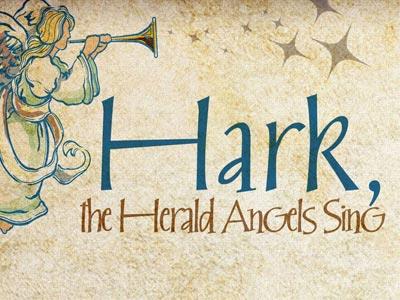-
Narnia: What If There Were No Christmas
Contributed by Dean O'bryan on Nov 28, 2017 (message contributor)
Summary: Using several of the other "Narnia" contributors’ information and ideas about C.S. Lewis and The Lion, the Witch and the Wardrobe, I shaped this sermon, based on John 1:1-14 and John 3:16
Trinity Baptist Church, December 18, 2005
What if there were no Christmas?
John 1:1-14, John 3:16
When he became a Christian, C.S. Lewis called himself, “perhaps the most dejected and reluctant convert in all of England.“ He had fought hard to hold onto his atheistic worldview. He had engaged in heated debates with other professors who were devout Christians, most notably J.R.R. Tolkien, author of The Lord of the Rings. But in spite his opposition, over time, Lewis began to see that there were answers -- good, intelligent answers -- to his most difficult questions. At first he believed in God -- then later -- he trusted in Jesus Christ as God‘s Son and His Savior.
As a Christian, Lewis became the greatest apologist of the 20th century. Some term him the greatest writer of the century. He published more than 40 books during his lifetime -- 20 more were published after his death. The BBC asked him to do series of radio lectures during WW II. People were so enamored by those radio talks that Lewis became the second most known person in England, second only to Winston Churchill. His radio talks were published later in the book called Mere Christianity.
Shortly after the war ended, the quiet professor wrote a series of children’s books which captured the imagination of a generation. The first and most popular of those stories came to the big screen last week, in a film that may capture the imagination of another generation. Lewis’ 7 books were called The Chronicles of Narnia -- the first was The Lion, the Witch and the Wardrobe.
When you read Narnia, you realize you’re reading a fairy tale. Lewis loved communicating through the fantasy of fairy tales -- he said you could use them to move right past peoples’ defenses and communicate Truth, especially spiritual Truths to which people so often become allergic. Like Jesus used parables, Lewis wove tales combined with powerful spiritual Truth.
The story begins with a family of four English children, Peter, Susan, Edmund and Lucy, being sent away from London to live in the countryside with a professor. During the German bombing of English cities in WWII, children were often sent to safer places in the country. Lewis himself had taken children into his country home in that way.
On a rainy day, the children explore the old house. In one room they discover a big wooden wardrobe. Later, during a game of hide and seek, Lucy, the youngest, decides to hide in that wardrobe. As she moves further and further toward the back, past old fur coats hanging there, she suddenly finds she’s in another world -- a forested world covered in snow and ice, dark and bitterly cold.
Nearby she sees a lamp post - an old fashioned streetlight giving off its light in the middle of a forest. By the light of that lamp post, Lucy suddenly sees a strange creature coming near - a faun, a being which is half human and half goat. The faun wears a warm scarf on his neck, and carries a number of parcels and an umbrella to keep off the falling snow.
The faun -- who we later discover is named Mr. Tumnus, is quite startled to meet Lucy - and then delighted when he finds she is a “daughter of Eve” - a human being. Mr. Tumnus tells Lucy that she’s now in the land of Narnia, and he invites her to his home for “tea” - which in England usually means more than just a cup of warm brew, it includes a nice, cozy kind of supper.
After tea, Mr. Tumnus tells Lucy tales about life in Narnia, and then he begins to play a strange kind of flute - the fire and the music make Lucy quite drowsy. When she finally rouses herself to leave, Mr. Tumnus bursts into tears and admits the truth to her.
The truth was, he’d been trying to enchant her and keep her there until he could turn her over to the White Witch. The White Witch had ordered that anyone who found a human -- a “son of Adam or daughter of Eve” - in Narnia was to turn them over to her. But now that Tumnus had actually met Lucy, he just couldn’t do it!
And who is this White Witch? She calls herself the Queen of Narnia, but she is a usurper, not the rightful ruler. She has magical powers, including the power to turn any who oppose her into solid stone. She’s cold, selfish and evil. And it is she who has made it winter in Narnia for the last hundred years - constant, frozen, endless winter - “always winter and never Christmas!” as Mr. Tumnus sadly says.
That’s our introduction to Narnia. It’s a beautiful world, populated, we discover, with a variety of creatures from mythology and fairy tales, as well as both talking and non-talking animals. It’s a world where there are both good and evil creatures, and some who are a little of both. And it’s a world under a curse - where it is always winter, but never Christmas.

 Sermon Central
Sermon Central



